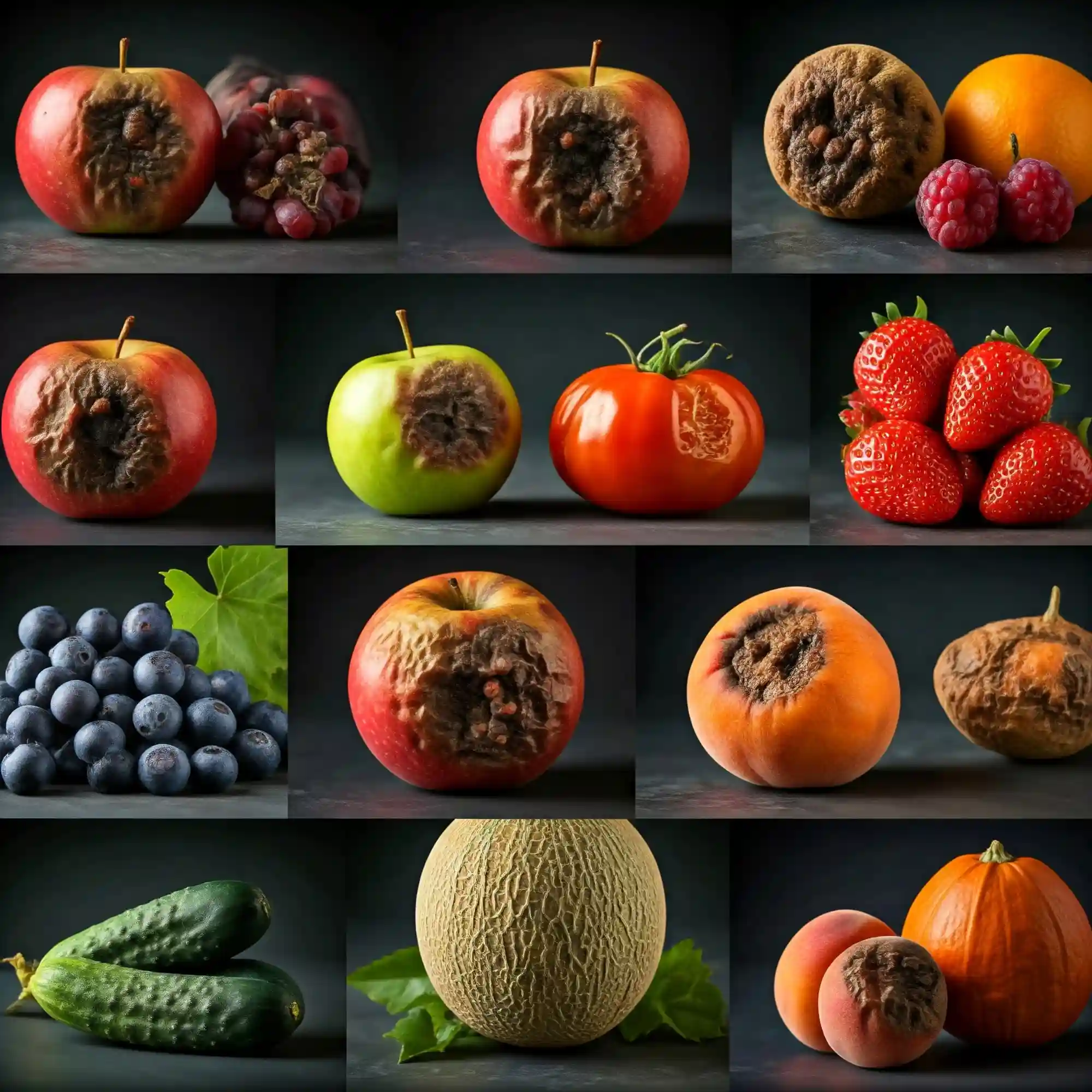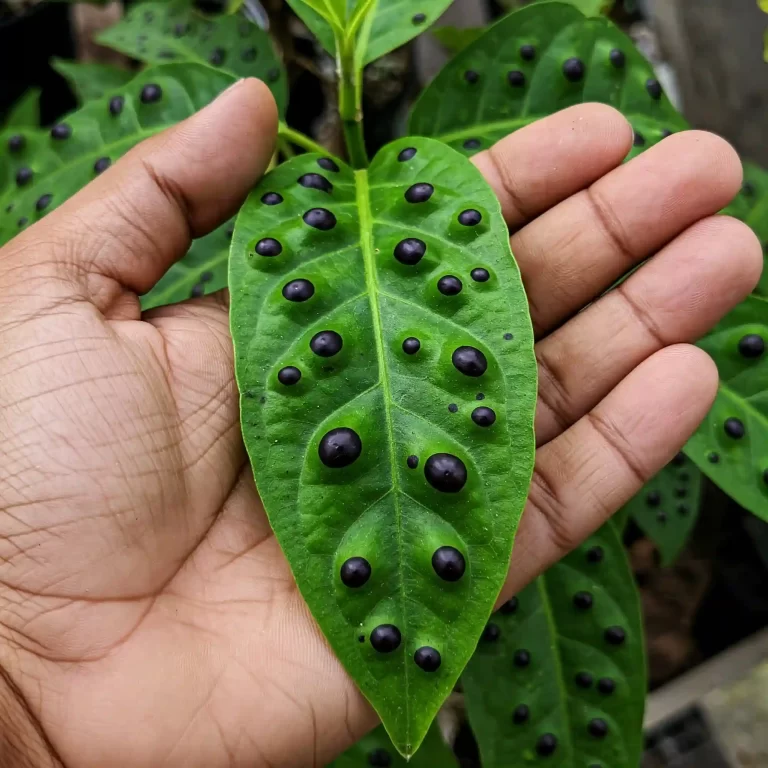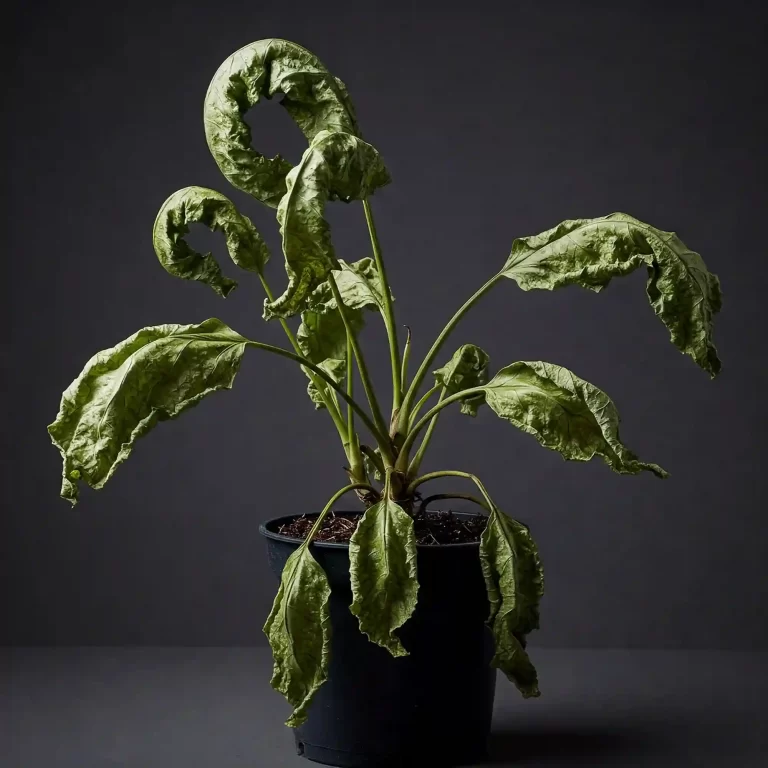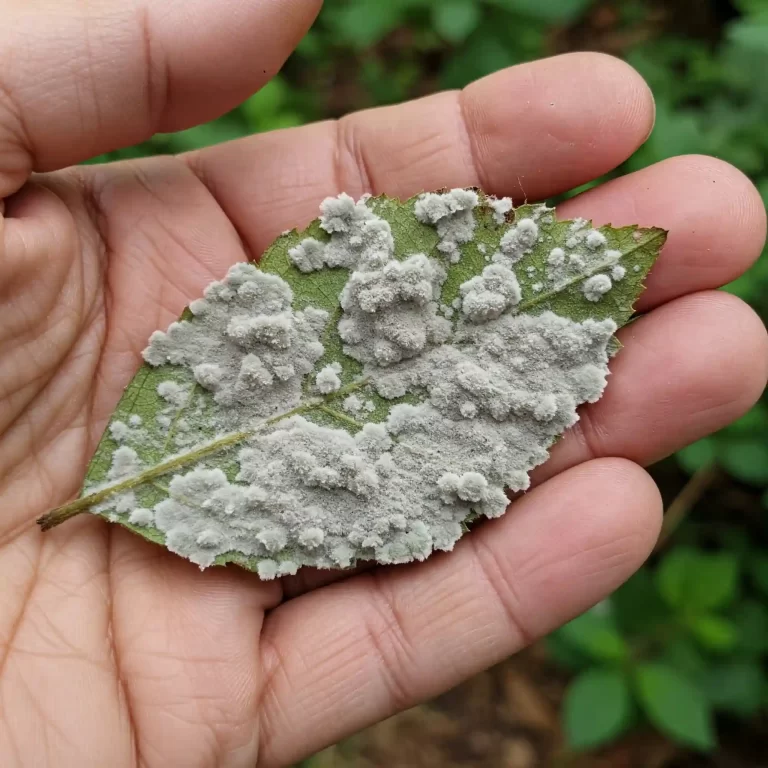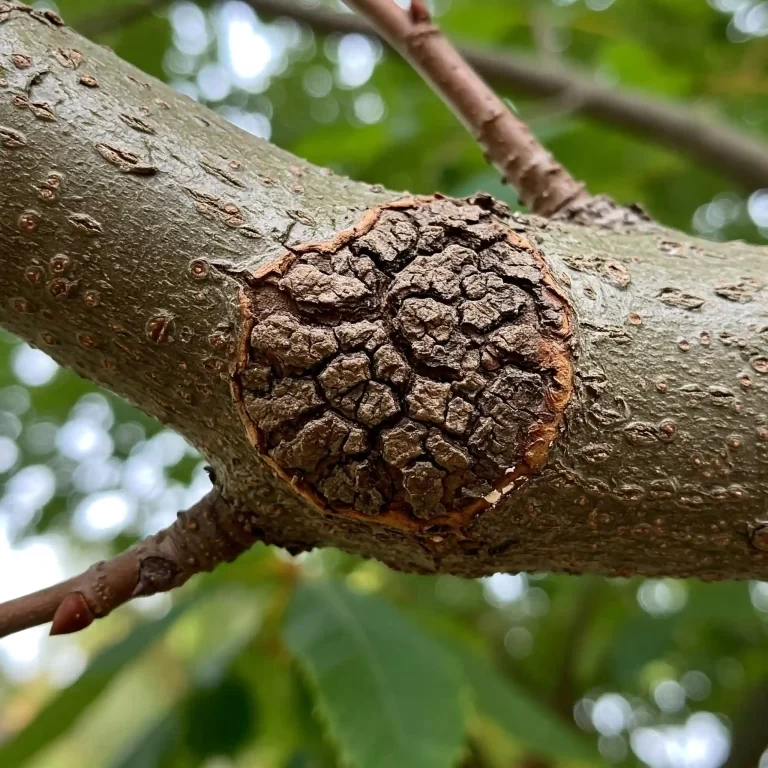That sinking feeling when you discover your prized apples, grapes, or tomatoes are rotting before you can harvest them—it’s a frustration every gardener knows. The culprit? Often, it’s bitter rot, a fungal disease that can devastate fruit crops. I’ve seen firsthand the damage this disease can inflict, from small spots to complete fruit decay, turning a promising harvest into a heartbreaking loss. But don’t despair! There are effective strategies you can use to prevent and control bitter rot, protecting your precious fruits and ensuring a bountiful harvest. In this comprehensive guide, I’ll share everything I’ve learned about identifying, preventing, and treating bitter rot, so you can safeguard your garden and enjoy the fruits of your labor.
What is Bitter Rot?
Bitter rot is a fungal disease that attacks a wide range of fruits, causing significant pre- and post-harvest losses. It’s caused by several species of fungi in the Colletotrichum genus, with Colletotrichum gleosporioides being the most common offender. The sexual stage of this fungus is known as Glomerella cingulata. This means the fungus can reproduce both asexually (producing spores called conidia) and sexually (producing ascospores), which contributes to its resilience and spread.
The disease cycle of bitter rot is crucial to understand for effective management. It begins with the overwintering of the fungus in infected plant debris, mummified fruit left on trees or the ground, or even in cankers on branches. In spring, when conditions become favorable (warm and humid with frequent rain), the fungus produces spores. These spores are spread by splashing water, wind, insects, and even by our own gardening tools and hands. When these spores land on susceptible fruit, they germinate and penetrate the fruit’s surface, starting the infection process.
Several factors contribute to the development and spread of bitter rot:
- Warm, humid weather: These conditions are ideal for fungal growth and spore dispersal. Temperatures between 75-85°F (24-29°C) and high humidity create a perfect environment for infection.
- Rain and splashing water: Rain and irrigation that wets the fruit surface facilitate spore dispersal and germination. Splashing water is a primary means of spreading the fungus from infected to healthy fruit.
- Wounds and insect damage: Injuries to the fruit, whether from insects, hail, or pruning, provide entry points for the fungus.
- Poor air circulation: Overcrowded plants and dense canopies create humid conditions that favor disease development.
Understanding these contributing factors is key to implementing preventative measures. I’ve noticed that gardens with good air circulation and proper pruning practices tend to have fewer problems with bitter rot.
Here’s a table summarizing the key aspects of the bitter rot pathogen:
Pathogen Characteristics
| Characteristic | Description |
| Causal Agent | Primarily Colletotrichum gleosporioides, also Colletotrichum acutatum |
| Sexual Stage | Glomerella cingulata |
| Spore Types | Conidia (asexual), Ascospores (sexual) |
| Overwintering Sites | Infected plant debris, mummified fruit, cankers |
| Favorable Conditions | Warm (75-85°F), humid weather, rain, splashing water, wounds |
| Disease Cycle | Spores are spread by water, wind, insects, tools; spores germinate on fruit surface and penetrate; infection develops; new spores are produced. |
| Impact on Fruit | Causes pre- and post-harvest rot, leading to significant yield loss. |
This detailed explanation of the pathogen and its life cycle is essential for you to understand how to effectively manage bitter rot in your garden or orchard. By understanding the conditions that favor the disease, you can take proactive steps to prevent its spread and protect your valuable fruit crops.
Identifying Bitter Rot: Spotting the Signs
Identifying bitter rot early is crucial for effective management. The symptoms can vary slightly depending on the type of fruit affected, but there are some common signs to watch for. I’ve learned that regular inspection of your fruit, especially after periods of warm, wet weather, is the best way to catch bitter rot in its early stages. You should make it a habit to inspect your fruit trees and plants at least once a week, paying close attention to any changes in the fruit’s appearance.
Key Visual Indicators:
- Circular lesions with concentric rings: This is one of the most distinctive signs of bitter rot. The lesions start as small, light-colored spots that gradually enlarge and develop dark, concentric rings, resembling a bullseye. I’ve noticed these rings are often slightly sunken, giving the lesions a target-like appearance.
- Sunken spots: As the disease progresses, the lesions become sunken and may develop a soft, watery texture. The affected area can become quite deep, penetrating into the fruit’s flesh.
- Spore masses: In humid conditions, you might observe small, raised pustules within the lesions. These pustules contain masses of spores, which are often pinkish, orange, or black. These are the reproductive structures of the fungus, and their presence indicates active disease spread.
- Mummification of fruit: In severe cases, the entire fruit can become infected, shrivel, and harden into a “mummy.” These mummified fruits remain on the tree or fall to the ground, serving as a source of inoculum for future infections.
Symptoms on Different Fruits:
- Apples: On apples, bitter rot lesions are typically circular, brown, and sunken, with distinct concentric rings. The rotted area is often firm and bitter to the taste.
- Grapes: Bitter rot on grapes can cause berry rot, bunch rot, and even shoot blight. Infected berries develop soft, brown lesions that quickly spread, often covering the entire berry.
- Tomatoes: On tomatoes, bitter rot lesions are similar to those on apples, starting as small, circular spots that enlarge and become sunken. The lesions can be brown or black and may have concentric rings.
- Peaches, Cherries, and Plums (Stone Fruit): On stone fruit, bitter rot can cause fruit rot, blossom blight, and twig cankers. Infected fruit develops brown, sunken lesions that may exude gum.
- Strawberries: Bitter rot on strawberries can cause fruit rot, blossom blight, and crown rot. Infected fruit develops soft, brown lesions that can quickly spread, causing the entire berry to decay.
- Blueberries: Bitter rot on blueberries can cause fruit rot and twig blight. Infected fruit shrivels and turns bluish-black.
- Cucurbits (Melons, Cucumbers, Squash): Bitter rot on cucurbits can cause fruit rot and stem lesions. Infected fruit develops sunken, water-soaked lesions that may have concentric rings.
Distinguishing Bitter Rot from Other Fruit Rots:
It’s important to differentiate bitter rot from other common fruit rots:
- Brown rot: Brown rot, caused by Monilinia species, also causes fruit rot but typically produces tan-brown lesions with fuzzy gray spore masses.
- Black rot: Black rot, caused by Botryosphaeria obtusa, causes black, sunken lesions on fruit, often with small black fruiting bodies.
- Blossom-end rot: Blossom-end rot is a physiological disorder caused by calcium deficiency, not a fungus. It causes a dark, leathery rot at the blossom end of the fruit.
By carefully observing these symptoms and understanding the differences between various fruit rots, you can accurately diagnose bitter rot and take appropriate action to protect your fruit crops. I’ve found that keeping a detailed garden journal with notes and photos of any disease symptoms can be incredibly helpful for future reference and diagnosis.
Which Plants are Susceptible to Bitter Rot?
Bitter rot, while indiscriminate in its attack, exhibits a marked preference for certain fruit crops. As a seasoned gardener, I’ve observed firsthand the varying susceptibility of different plants, and I’ve compiled a list of the most commonly affected species to help you safeguard your precious harvest.
Key Targets of Bitter Rot:
- Apples: The quintessential fall fruit, apples are highly susceptible to bitter rot. The disease manifests as dark, sunken lesions with a characteristic bitter taste, often rendering the fruit inedible.
- Grapes: Both table and wine grapes are vulnerable to bitter rot, which can cause significant yield loss in vineyards. The disease can spread rapidly through a bunch, turning healthy grapes into mushy, rotten messes.
- Tomatoes: This garden staple is also a favorite of bitter rot. The disease can strike at any stage of fruit development, from small green tomatoes to ripe, juicy ones.
- Peaches, Cherries, and Plums (Stone Fruit): These delectable stone fruits are not spared from bitter rot’s wrath. The disease can cause fruit rot, blossom blight, and even twig cankers, threatening the overall health of the tree.
- Strawberries: These delicate berries are particularly susceptible to bitter rot in humid conditions. The disease can quickly turn a patch of ripe strawberries into a moldy disaster.
- Blueberries: These antioxidant-rich berries are also at risk, especially in regions with warm, wet summers. Bitter rot can cause significant losses for blueberry growers.
- Cucurbits (Melons, Cucumbers, Squash): While not as commonly affected as other fruits, cucurbits can also fall victim to bitter rot, especially in humid environments with poor air circulation.
Factors Influencing Susceptibility:
Several factors can influence a plant’s susceptibility to bitter rot, including:
- Varietal Resistance: Some varieties of fruit are naturally more resistant to bitter rot than others. When selecting plants for your garden, consider choosing resistant varieties whenever possible.
- Plant Age and Health: Young or stressed plants are often more susceptible to disease. Ensure your plants are healthy and vigorous by providing proper care, including adequate sunlight, water, and nutrients.
- Environmental Conditions: Warm, humid weather and frequent rainfall create ideal conditions for bitter rot development. In these conditions, even resistant varieties may become infected.
By understanding which plants are most susceptible to bitter rot and the factors that influence disease development, you can take proactive steps to protect your garden and ensure a bountiful harvest.
Bitter Rot Prevention: Protecting Your Harvest
Prevention, as they say, is better than cure. When it comes to bitter rot, this adage rings especially true. As someone who has spent years cultivating various fruits, I’ve learned that a proactive approach is the most effective way to minimize the risk of this devastating disease. By implementing preventative measures, you can create a less hospitable environment for the fungus and safeguard your precious harvest.
Key Preventative Strategies:
- Proper Pruning: Pruning is essential for improving air circulation within the canopy of your fruit trees and plants. Good air circulation helps to dry out leaves and fruit, reducing the humidity that favors fungal growth. When pruning, focus on removing crossing branches, dead or diseased wood, and any branches that are growing inwards. This will allow sunlight to penetrate the canopy and improve airflow.
- Orchard/Garden Sanitation: Maintaining a clean orchard or garden is crucial for preventing the spread of bitter rot. Remove any infected fruit from the trees and the ground as soon as you spot it. Also, clear away fallen leaves, twigs, and other debris that can harbor the fungus. This practice helps to reduce the source of inoculum for future infections.
- Avoid Overhead Watering: Overhead watering can create humid conditions that favor fungal growth and spore dispersal. Whenever possible, water your plants at the base, using drip irrigation or soaker hoses. This will help to keep the foliage and fruit dry, reducing the risk of infection.
- Crop Rotation: If you’re growing susceptible crops like tomatoes or strawberries in your garden, practice crop rotation. This involves planting different crops in the same area each year to disrupt the disease cycle. By rotating crops, you can help to reduce the buildup of fungal pathogens in the soil.
- Choosing Resistant Varieties: When selecting fruit trees or plants for your garden, consider choosing varieties that are known to be resistant to bitter rot. While no variety is completely immune, resistant varieties are less likely to become infected.
Additional Tips for Prevention:
- Monitor Weather Conditions: Pay close attention to weather forecasts, especially during periods of warm, wet weather. These conditions are ideal for bitter rot development, so you may need to take extra precautions during these times.
- Protect Fruit from Injury: Avoid injuring fruit during harvesting or pruning. Wounds provide entry points for the fungus, so handle your fruit with care.
- Promote Plant Health: Healthy, vigorous plants are more resistant to disease. Ensure your plants are getting adequate sunlight, water, and nutrients.
By implementing these preventative measures, you can significantly reduce the risk of bitter rot in your garden or orchard. Remember, prevention is key to protecting your harvest and enjoying the fruits of your labor.
Bitter Rot Control: Treatment Options
Despite our best efforts at prevention, sometimes bitter rot still manages to take hold. If you find your fruit showing signs of infection, don’t despair! There are several effective treatment options available to help you control the disease and salvage as much of your harvest as possible. From my experience, a combination of cultural practices and targeted treatments offers the best chance of success.
Treatment Approaches:
- Cultural Practices: Even when an infection is present, maintaining good cultural practices is crucial. Continue to remove infected fruit and debris, improve air circulation through pruning, and avoid overhead watering. These practices will help to reduce the spread of the disease and create a less favorable environment for the fungus.
- Organic Options: For gardeners who prefer organic methods, there are several effective options for controlling bitter rot:
- Copper Fungicides: Copper-based fungicides can be effective in preventing and controlling a variety of fungal diseases, including bitter rot. These fungicides work by disrupting the enzymes of the fungal pathogen. It’s important to apply copper fungicides before infection occurs or at the very first sign of disease. Always follow the instructions on the product label and use caution when applying copper, as it can be toxic to some plants and beneficial organisms if used incorrectly.
- Bacillus subtilis: This beneficial bacterium is a natural antagonist to many fungal pathogens, including those that cause bitter rot. Bacillus subtilis works by colonizing the plant’s surface and competing with the fungal pathogens for resources. It can also produce antifungal compounds that inhibit fungal growth. Products containing Bacillus subtilis can be applied as a foliar spray or soil drench.
- Chemical Options: For more severe infections or in commercial orchard settings, chemical fungicides may be necessary. Several effective fungicides are available for controlling bitter rot:
- Captan: Captan is a broad-spectrum fungicide that is effective against a wide range of fungal diseases, including bitter rot. It works by inhibiting fungal respiration. Captan is available in various formulations, including sprays and dusts.
- Mancozeb: Mancozeb is another broad-spectrum fungicide that is effective against bitter rot. It works by disrupting multiple metabolic processes in the fungus. Mancozeb is often used in combination with other fungicides to broaden the spectrum of control.
- Chlorothalonil: Chlorothalonil is a protectant fungicide that is effective against a variety of fungal diseases, including bitter rot. It works by inhibiting fungal enzymes. Chlorothalonil is often used as a preventative treatment, but it can also be effective in controlling existing infections if applied early enough.
Important Considerations When Using Fungicides:
- Follow Label Instructions: Always read and follow the instructions on the product label carefully. This will ensure that you are using the fungicide correctly and safely.
- Use Protective Gear: When applying fungicides, wear protective clothing, including gloves, goggles, and a mask. This will help to protect you from exposure to the chemicals.
- Apply at the Right Time: The timing of fungicide applications is crucial for effective control. Apply fungicides before infection occurs or at the very first sign of disease. Repeat applications as needed, following the instructions on the product label.
- Rotate Fungicides: To prevent the development of fungicide resistance, it’s important to rotate between different classes of fungicides. This means using fungicides with different modes of action.
- Consider Postharvest Treatments: For fruit that will be stored for extended periods, postharvest treatments can help to prevent bitter rot development. These treatments may include dipping fruit in a fungicide solution or storing it in cold storage.
By understanding the available treatment options and implementing them correctly, you can effectively control bitter rot and protect your valuable fruit crops. Remember, early detection and prompt action are key to successful disease management.
Frequently Asked Questions (FAQs)
I’ve compiled a list of frequently asked questions about bitter rot to address any remaining concerns you may have.
How to identify and treat bitter rot on apples?
Bitter rot on apples manifests as dark, sunken lesions with a characteristic bitter taste. The lesions often have concentric rings, resembling a bullseye. To treat bitter rot on apples, start by removing any infected fruit from the tree and the ground. Improve air circulation by pruning the tree and avoid overhead watering. Apply appropriate fungicides, such as copper-based fungicides or Captan, following the instructions on the product label.
Best organic methods for preventing bitter rot on grapes?
To prevent bitter rot on grapes organically, focus on cultural practices such as proper pruning to improve air circulation, removing infected fruit and debris, and avoiding overhead watering. You can also apply organic fungicides, such as those containing Bacillus subtilis, as a preventative measure.
Effective fungicide treatments for bitter rot on tomato plants?
Several fungicides are effective for treating bitter rot on tomato plants, including Captan, Mancozeb, and Chlorothalonil. Apply the chosen fungicide according to the instructions on the product label, ensuring thorough coverage of the plant.
What causes bitter rot on strawberries and how to prevent it?
Bitter rot on strawberries is caused by the fungal pathogens Colletotrichum acutatum and Colletotrichum fragariae. The disease is favored by warm, humid conditions and can spread quickly through a strawberry patch. Prevent bitter rot by ensuring good air circulation around the plants, avoiding overhead watering, and removing any infected fruit promptly.
Is bitter rot contagious between different types of fruit trees?
Yes, bitter rot can spread between different types of fruit trees. The fungal spores can be dispersed by wind, water, insects, and even gardening tools, potentially infecting nearby trees of different species.
Can bitter rot survive in the soil over the winter months?
Yes, bitter rot can survive in the soil over the winter months, particularly in infected plant debris or mummified fruit left on the ground. This is why it’s essential to practice good orchard/garden sanitation and remove any potential sources of inoculum.
What are the best cultural practices to prevent bitter rot in orchards?
The best cultural practices to prevent bitter rot in orchards include proper pruning to improve air circulation, removing infected fruit and debris, avoiding overhead watering, and promoting overall tree health through proper fertilization and watering practices.
Conclusion: A Healthy Harvest Free from Bitter Rot
Bitter rot can be a formidable foe in the garden and orchard, but with a comprehensive understanding of the disease and a proactive approach to its management, you can protect your precious fruit crops and ensure a bountiful harvest. I’ve found that combining preventative measures with targeted treatments offers the most effective control.
Key Takeaways:
- Identification is key: Learn to recognize the distinctive symptoms of bitter rot on different fruits, including circular lesions with concentric rings, sunken spots, and spore masses.
- Prevention is paramount: Implement preventative measures such as proper pruning, orchard/garden sanitation, avoiding overhead watering, crop rotation, and choosing resistant varieties.
- Timely treatment is crucial: If infection occurs, take prompt action with appropriate treatments, whether organic or chemical, following label instructions carefully.
- Monitor and adapt: Regularly monitor your fruit trees and plants for signs of disease and adapt your management strategies as needed.
By following the guidelines outlined in this comprehensive guide, you can effectively manage bitter rot and enjoy the fruits of your labor. Remember, a healthy harvest starts with proactive plant care and a vigilant eye.
